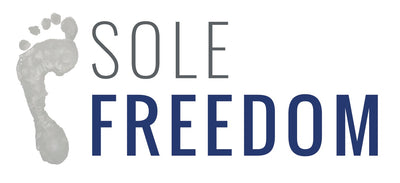If you have feet — this is for you.
If you have foot pain and want to heal it — this is for you.
If you're a health professional — this is a resource for you and your patients.
These are the 7 essential steps to reclaim foot function, eliminate chronic pain, and build feet that are strong, mobile, adaptable, and resilient — for life.
This blog is the distillation of 8+ years of clinical work, first principles of physiology, and lived experience helping thousands of people heal their feet naturally.
Let’s dive in.
Step 1: Shift Your Mindset
Foot health isn’t a quick fix — it’s a long-term process.
If you want to heal pain or build strong feet, you need to:
- Think long term
- Take responsibility
- Respect the process
- Show up daily
Mindset shapes everything. It’s not about hacks. It’s about consistency and ownership.
Step 2: Fix Your Footwear
90%+ of modern foot issues are caused by unnatural footwear — narrow, stiff, elevated shoes that deform toes, limit movement, and weaken your feet over time.
Here’s what to do:
✅ Ditch shoes that are:
– Tapered
– Rigid
– Cushioned
– Heeled
✅ Switch to natural footwear:
– Foot-shaped toe box
– Flexible sole
– Zero drop
– Thin and flat
And yes — go barefoot as often as possible in safe environments.
Removing the root cause is the fastest way to start healing.
Step 3: Build a Daily Practice
Foot health takes time. But you don’t need to do much — just do something every day.
- 10 minutes a day of movement
- A consistent, simple practice
- Focused attention on your body and feet
If you don’t show up consistently, change won’t happen.
Step 4: Recondition Your Feet
You’ve spent years in shoes that deactivated your feet — now it’s time to turn them back on.
Foot reconditioning tools & techniques:
- Toe spreaders
- Mobility balls for tissue release
- Barefoot time
- Single-leg strength work
- Manual joint mobilization
Be gentle. Go slow. Stay consistent.
Progress is measured in months, not minutes.
Step 5: Train Your Balance
If you can’t stand on one foot with your eyes closed for 60 seconds, it’s time to improve balance.
Good balance = fewer injuries, better foot strength, and stronger ankles, knees, and hips.
Try:
- Balance beams
- SoleMates
- One-leg play (eyes open → eyes closed)
Make it fun. Your brain learns best when you enjoy the process.
Step 6: Reclaim Your Squat
Can you sit in a deep, barefoot squat for 2 minutes — with your feet flat and your breath calm?
If not, your hips, ankles, and feet are likely missing critical mobility and control.
Add daily squat training to your routine. Start small:
- Use support
- Hold the position
- Breathe slowly
- Build tolerance over time
Resting in a squat is a natural human posture — and reclaiming it can massively improve your foot and lower body function.
Step 7: Spend Time on the Ground (Not in Chairs)
Chair sitting restricts mobility. Ground sitting builds it.
Try this test:
Can you get up and down from the floor 3x without using your hands?
If not, you’re missing essential mobility and strength.
Start by:
- Reducing sitting time to <4 hours/day
- Spending time on the floor (cross-legged, kneeling, squatting)
- Getting up and down more often
Your feet — and your whole body — will thank you.
Summary: The 7 Steps to Free Your Sole
- Mindset – Think long term, take responsibility
- Footwear – Eliminate unnatural shoes
- Daily Practice – Commit to daily movement
- Reconditioning – Mobilize and activate your feet
- Balance – Train stability
- Squat – Reclaim your natural rest position
- Ground Time – Ditch chairs, use the floorHealing foot pain and building strong, mobile feet isn’t complicated — it’s just consistent.
FAQ: Natural Foot Health & Pain-Free Living
1. Do I really need to do all 7 steps?
You don’t have to be perfect. But the more steps you follow consistently, the better your results will be. Start where you are.
2. Can I really fix my feet without surgery or orthotics?
Yes. Most foot issues are caused by poor inputs — not bad luck. With natural footwear and daily movement, you can often restore function naturally.
3. What if I don’t have time?
You only need 10 minutes a day. It’s not about complexity — it’s about showing up consistently.
4. Do I need special tools?
Not really. A mobility ball, toe spacers, and barefoot-friendly shoes help — but your body is your best tool.

